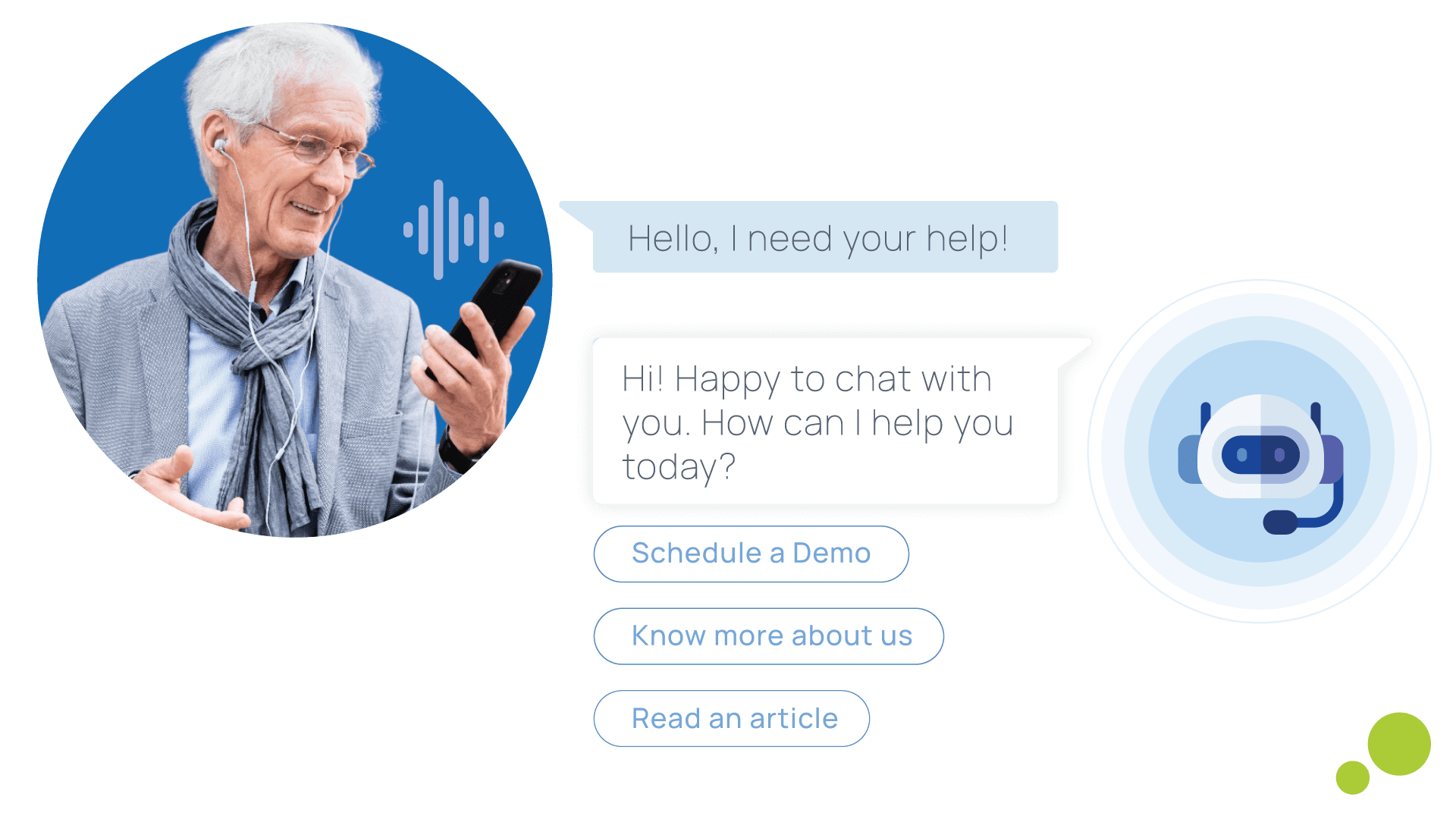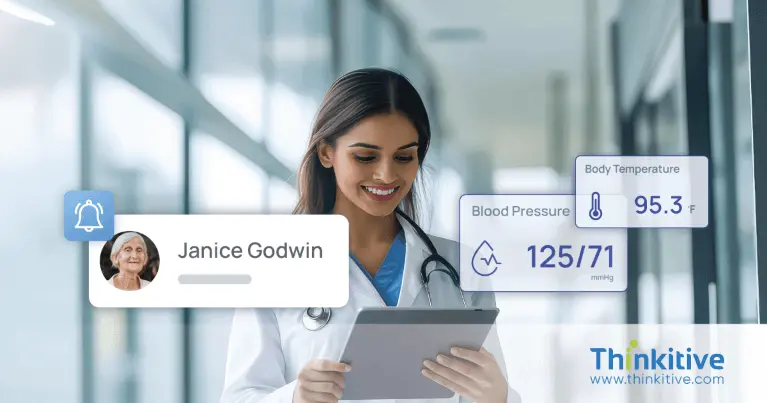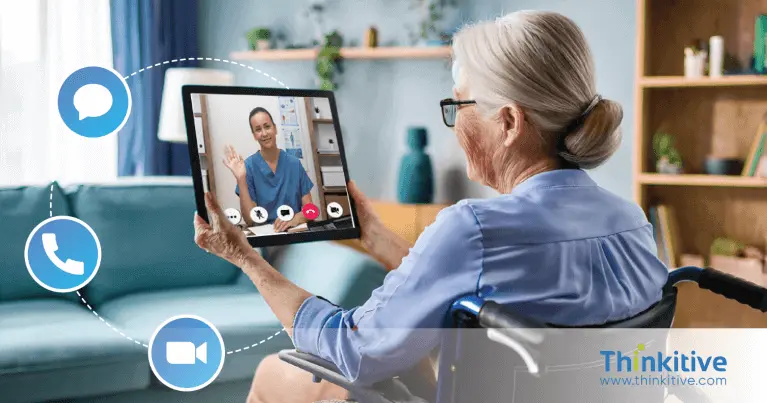Business Challenges
- Complexity of Managing Multiple Systems
- Inefficient Scheduling Processes
- Challenges in Real-Time Health Monitoring
- Suboptimal Care Plan Management
- Inadequate Data Utilization for Decision-Making
Solution
- Unified Care Management Platform
- AI-Driven Automated Care Scheduling
- IoT-Enabled Intelligent Health Monitoring System
- AI-Powered Healthcare Assistants
- AI-Driven Dynamic Care Plan Optimization
- Advanced Analytics for Decision-Making
Values
- 30% Fewer Scheduling Conflicts: Automated scheduling reduces appointment overlaps.
- 25% Boost in Patient Engagement with AI assistants: Enhance interaction and self-management.
- 40% Quicker Emergency Responses: Real-time alerts enable faster interventions.
- 35% Better Care Plan Adherence: Dynamic adjustments keep plans aligned with patient needs.
- 20% Improved Decision-Making: Advanced analytics provide actionable insights from data.
Solution Implementation
Our client, a home care agency based in the U.S., aimed to develop a custom software solution to move away from their dependence on multiple subscription-based systems that complicated their daily operations. These existing platforms created excessive manual tasks for staff, ultimately impacting efficiency and patient care. To enhance service delivery, the client envisioned an advanced system with AI functionalities integrated into several modules. Drawing on our expertise in custom healthcare software development, we embarked on creating a cohesive solution tailored to their specific challenges, focusing on streamlining workflows and improving care management and patient engagement.
1. Unified Care Management Platform:
The unified care management platform served as a centralized hub that integrated various functionalities essential for home care operations. By centralizing patient records, scheduling, billing, and communication into a single interface, the system enhanced operational efficiency and fostered real-time collaboration. Role-based access control (RBAC) ensured data security while allowing users to access relevant information swiftly. The platform’s intuitive user interface designed for minimal training time, allowed staff to adapt quickly and focus more on patient care. Furthermore, the integration of EHR systems ensured comprehensive patient histories are readily available, thus improving care quality and facilitating better patient outcomes through informed decision-making.
- Enhanced Operational Efficiency and Collaboration
- Role-Based Access Control for Data Security
- Intuitive User Interface for Rapid Staff Adaptation
2. AI-Driven Automated Care Scheduling:
The automated care scheduling feature revolutionized the way appointments and caregiver visits are managed by leveraging AI and machine learning. This system intelligently coordinated scheduling for in-office appointments, virtual check-ins, and caregiver visits, alleviating the burdens of manual scheduling. By considering factors such as patient needs, caregiver availability, and appointment frequencies, the AI algorithms dynamically adjust schedules in real time, minimizing the risk of conflicts and cancellations. The user-friendly interface allowed staff to view and manage appointments effortlessly, enhancing efficiency and reducing administrative overhead. With automated scheduling, the overall patient experience improved as they benefitted from more reliable and flexible access to healthcare services, ultimately leading to enhanced satisfaction and outcomes.
- Real-Time Conflict Resolution and Adjustments
- Coordination of Appointments and Visits
- Reduction of Administrative Overhead

3. AI-Powered Healthcare Assistants:
AI-powered healthcare assistants are transformative tools designed to support patients outside traditional medical settings. These virtual nursing assistants, accessible via apps or chatbots, can handle a range of non-critical tasks that typically require human intervention. For patients without 24/7 access to medical care, these assistants provided crucial support by answering questions, reminding patients about medications, and assisting with daily activities. Utilizing natural language processing, the AI could understand and respond to patient inquiries effectively, fostering a sense of engagement and reassurance. This functionality not only alleviated the workload on healthcare professionals but also empowered patients to take an active role in managing their health. Additionally, by offering around-the-clock assistance, these AI tools help bridge gaps in care, ensuring that patients feel supported at all times, which is essential for maintaining health and wellness.
- Non-Critical Task Automation via AI Chatbots
- 24/7 Access to Virtual Nursing Support
- Real-Time Medication Reminders and Patient Support

4. IoT-Enabled Intelligent Health Monitoring System:
The intelligent health monitoring system incorporated advanced IoT devices and real-time data analytics to enhance patient safety and care quality. By utilizing wearable sensors and smart applications, the system continuously collects vital signs and movement data, providing a comprehensive view of a patient’s health status. Alerts are generated automatically when abnormalities are detected, enabling caregivers to respond swiftly to potential medical emergencies. This proactive monitoring reduced the risks associated with delayed interventions, thereby improving patient outcomes. Additionally, the collected data can be analyzed to identify trends and patterns, allowing healthcare providers to make informed decisions regarding care adjustments. The integration of intelligent monitoring technologies fosters a more responsive care environment, ensuring that patients receive timely attention and support.
- Real-Time Data Collection and Vital Sign Tracking
- Automated Alerts for Abnormalities and Emergencies
- Data Analytics for Informed Care Adjustments
5. AI-Driven Dynamic Care Plan Optimization:
Dynamic care plan optimization leveraged AI to ensure that care strategies remain relevant and effective. This feature allowed healthcare providers to adjust care plans in real time based on continuous patient data analysis, reflecting any changes in a patient’s condition or treatment response. The system utilized machine learning algorithms to identify patterns and suggest evidence-based modifications, ensuring that care approaches align with the latest clinical guidelines and best practices. This adaptability is particularly valuable in managing chronic conditions, where patient needs may evolve rapidly. By facilitating ongoing assessment and adjustment of care plans, this feature enhanced patient outcomes and promoted adherence to treatment protocols.
- Real-Time Adjustments Based on Continuous Data Analysis
- Machine Learning for Evidence-Based Modifications
6. Advanced Analytics for Decision-Making:
The advanced analytics feature employed AI-driven tools to extract meaningful insights from large volumes of patient data. By aggregating and analyzing diverse data sets, healthcare providers could identify trends and patterns that inform clinical decision-making. This capability enhanced the ability to proactively manage patient health by allowing for timely interventions based on predictive analytics. For instance, the system can flag patients at risk of deterioration or highlight those who may benefit from a care plan adjustment. The intuitive dashboard presents these insights in a user-friendly format, enabling care teams to quickly access critical information. This data-driven approach not only supports personalized patient care but also enhances overall operational efficiency by optimizing resource allocation and improving care coordination.
- Data Aggregation for Enhanced Clinical Decision-Making
- Optimizing Resource Allocation Through Data Insights
- Predictive Analytics for Proactive Patient Management
Business Value
Improving UX
Helped being on the same page with the patients. We improved User experience and made the accuracy of the results higher.
Developing All Flow
Helped in having a competitive advantage. We chose a proper tech stack, developed all flow from A to Z and implemented in real life.
Optimization
Increasing operational speed by 2 times. Now all data in one place. Increasing operational speed by 2 times. Now all data in one place.
Transform Your Business with Powerful Insights Enabled by Cutting- Edge Generative AI






